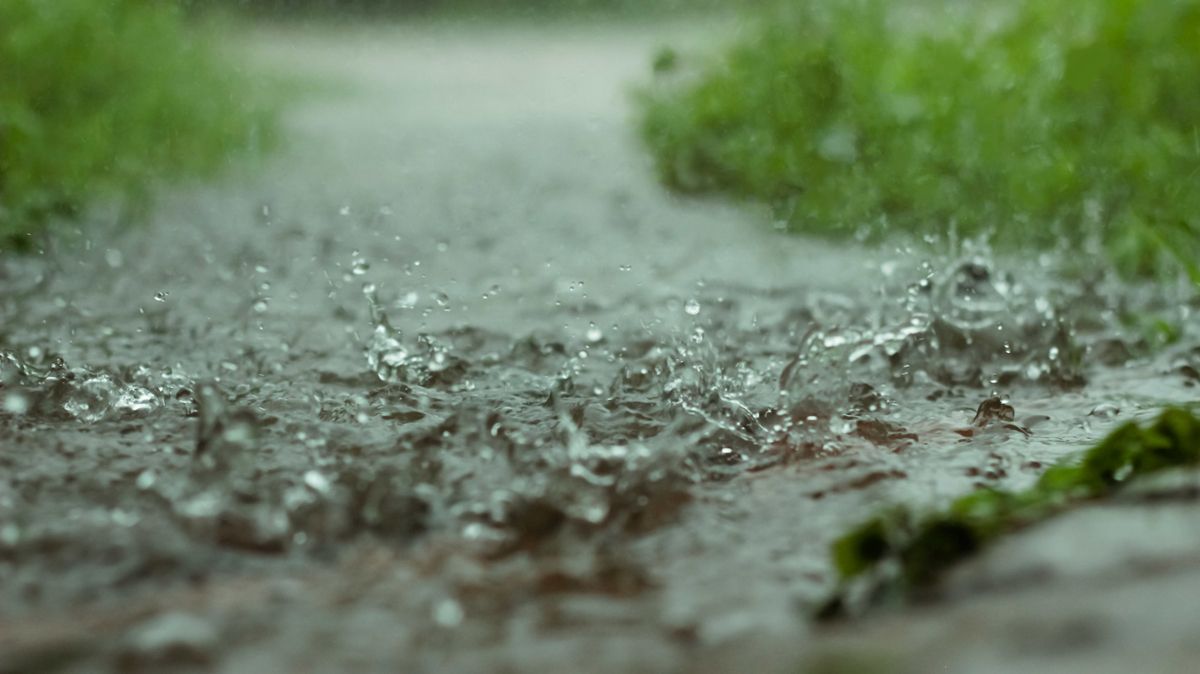Some days rain falls in a light, calm sweep across the earth. On other days rain falls in a torrential downpour, flooding the ground below. So, what causes this difference?
The quantity and intensity of rainfall in any particular event depends on two factors: the amount of moisture in the air—usually in the form of clouds—and the force of air currents moving upward. As moist air moves up through clouds, the air cools and forms water droplets. The higher these water droplets go, the larger and heavier they become.
Cold air holds much less moisture than warm air, and it does not rise as quickly. So clouds in the winter hold much less water than clouds in the summer. Wintertime clouds tend to be flatter and not very tall, rather than puffy and stacked. As cool, gentle air currents push through thin clouds, only small water droplets form, and the rain that falls is gentle and calm.
Thunderstorms occur when air currents move quickly upward through very moist air. These storms are typical of summertime. Warm, moist air rises as quickly as sixty to seventy miles per hour, forming large water droplets. With the air currents pushing up so fast, these droplets can get very big before gravity can pull them down. Eventually, the weight of the water collapses the wind currents, and the water comes coursing down at once, inundating everything beneath.
These sudden storms, called cloudbursts, can drop several inches of rain in an hour, which can lead to flash flooding. But thankfully, these storms are typically short-lived. After the air current collapses, the clouds empty quickly and reveal a blue sky.










